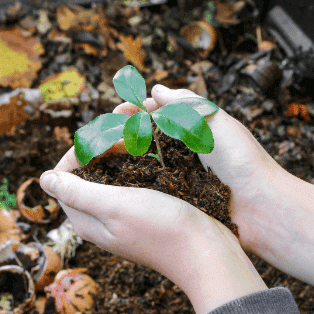How to compost
Learn how to compost with our step-by-step guide
Learn how to compost with our step-by-step guide
From choosing your compost to maintaining it, there are several things to think about when you’re starting out with composting. Below, we’re taking you through the process step-by-step.

You can either use a compost bin or an open pile. Compost bins have a slight advantage in that they are neat, they keep out animals and they preserve heat. Compost bins can be purchased from most garden centers and are relatively cheap.
Try and find an area that is flat, well-drained, and open to sunlight. This will make for the best conditions for your compost.
Store any compostable kitchen waste in a container in a cool and dry place. Once this container is filled up, add it to your compost. When adding any food waste, be sure to top it up with a layer of brown material. If you do not do this, your compost will become damp, and break down more slowly.
The contents of the bin will shrink as they begin to decompose.
When adding new layers to the pile, ensure you mix it in with older layers.
Keep the compost moist. It should be the dampness of a wrung-out sponge. Add water or dry materials to ensure this. Ensure you regularly mix the compost to eliminate bad odors and help the decomposition process.
Compost has a whole range of garden uses. Try sprinkling it on your lawn, placing a layer over the soil in your flower beds, or even making compost tea. Fill an old pillowcase full of compost, tie the top, and place it in a bin of water overnight; this can then be used to water plants and gardens.
Want to know more about how our packaging solutions can help your business with its goals? Fill in the form and we’ll get back to you as soon as we can.